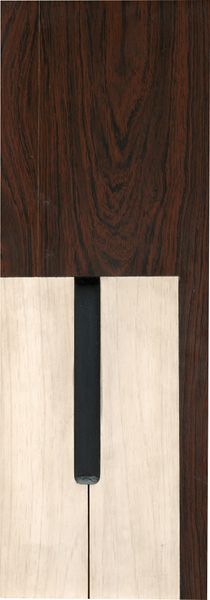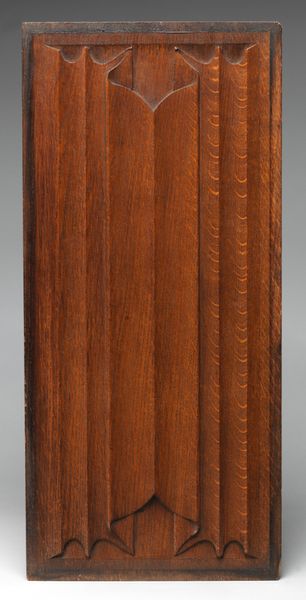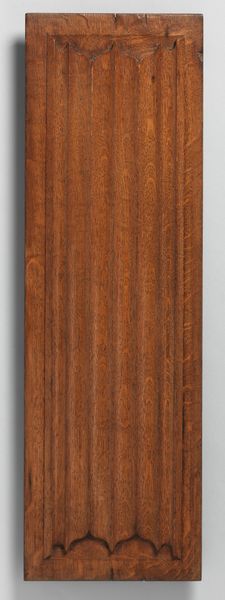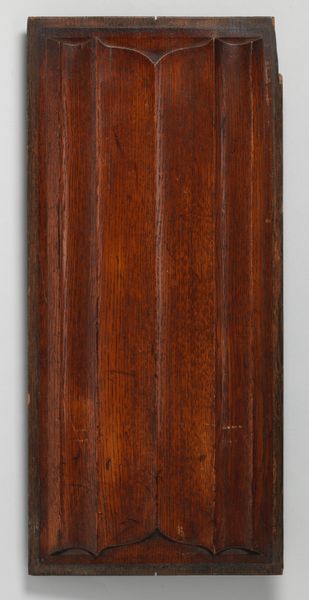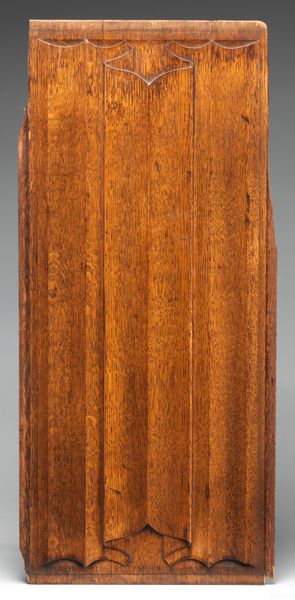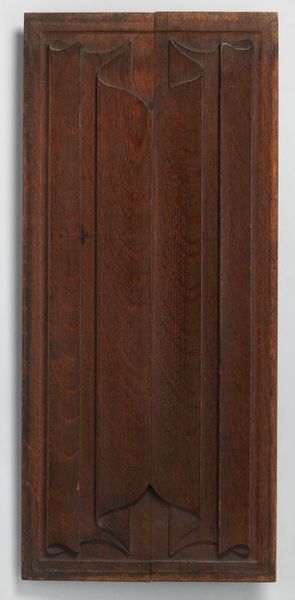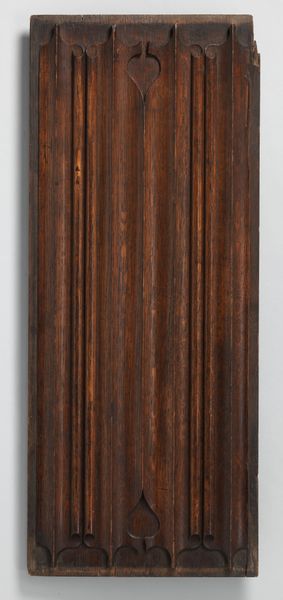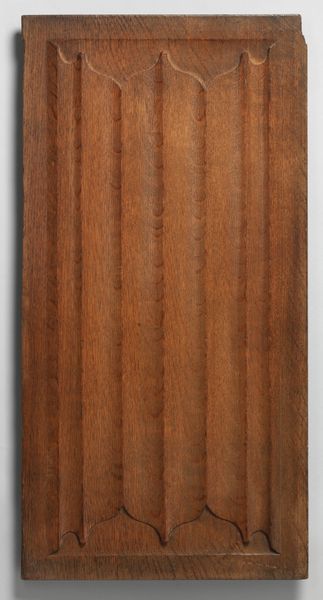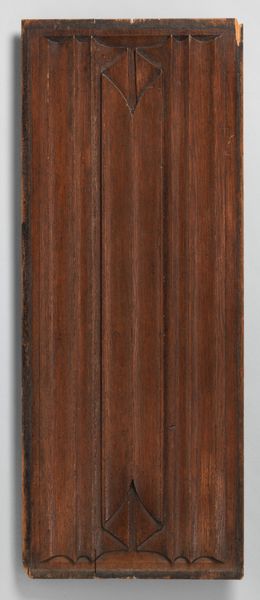
photography, wood, albumen-print
#
portrait
#
wood texture
#
toned paper
#
photography
#
wooden texture
#
wood
#
decorative-art
#
albumen-print
Dimensions: height 302 mm, width 230 mm, thickness 50 mm, width 440 mm
Copyright: Rijks Museum: Open Domain
Curator: Ah, this piece whispers secrets, doesn't it? A "Fotoalbum met 32 foto's van bekende personen," created sometime between 1855 and 1900. The album, an anonymous creation, houses thirty-two albumen prints within a decorative wooden cover. It's so simple, and yet... Editor: It presents a rather rigid and symmetrical facade. Two horizontal bands intersect the wooden paneling, punctuated by what appears to be six equidistant fasteners or circular embellishments. The wood grain itself establishes a dominant vertical thrust that clashes subtly with those horizontal elements. Curator: I love that you see that tension. I imagine it sitting closed on a velvet table, like a treasure chest for stolen moments. Imagine the lives tucked away inside, each photo a frozen breath from another era. The wood grain is so subtle—it invites you to lean closer, to discover something personal, hidden in the whorls. Editor: Indeed, that surface treatment has the distinct feel of carefully considered artistry. The woodgrain is meticulously rendered; it’s not just wood, but an exercise in texture and form. Those circular 'fasteners', as you put it, could equally function as visual anchors; they interrupt the woodgrain, controlling the eye and adding another layer to the visual composition. It’s semiotic intent—perhaps symbolic, representing connection and unity? Curator: Symbolic of the bonds of family and friends? Or perhaps fame—after all, this contains portraits of well-known figures. I imagine someone lovingly curating this collection, a personal pantheon of faces. The materiality speaks volumes, right? Wood and photograph—nature and technology embracing. Editor: Absolutely. It brings the structural aspect forward, inviting us to question the relationship between form and content, the veneer hiding deeper meanings. Even the albumen prints; the way they react chemically, how the images themselves emerge from the materials is conceptually crucial. What is being captured but light’s encounter with a treated surface? Curator: The light in those portraits...fading perhaps, but still there. You know, looking at it, I feel that these pictures, now shielded by this decorative cover, must have been very important to someone, like a warm hug or maybe a portal to other lifetimes, all tucked in this wood binding. Editor: I see how that emotional element speaks through its composition and craft. Still, consider it’s geometric organization—the rigorous formalism hints to a much deeper semiotic layering that speaks more about how identity, history, and memory are structured through visual and material relationships. A silent choreography that tells us more than we can directly interpret.


